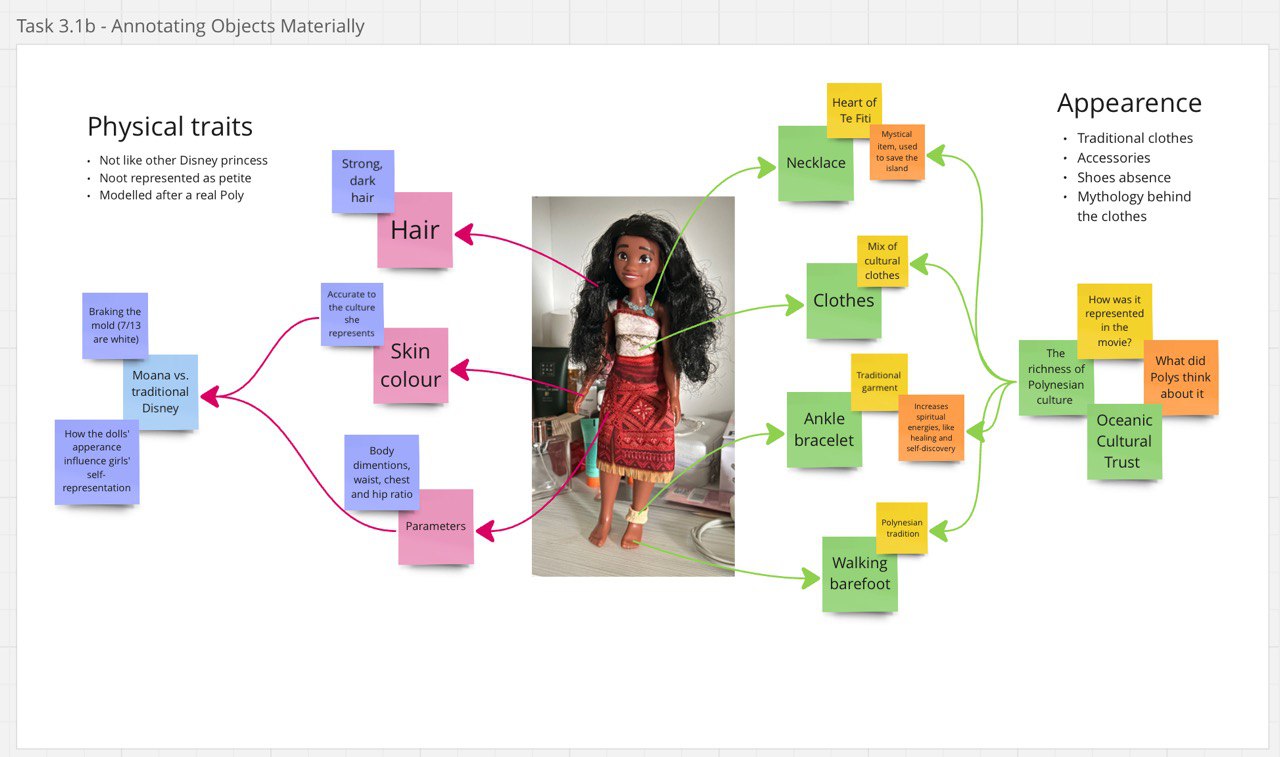
Last but not least, our work with Voyager became an important part of the project. Before adding our articles and annotations to the platform, we started by visualising the structure using the Miro board, which was provided to every pair of students as part of the course. Using simple tools like arrows and stickers helped us plan our narrative and organise the ideas we wanted to include in the tour.

After that, we moved on to writing the articles in Google Docs. This step allowed us to work together on the content, edit it, and agree on the final versions before uploading everything into the 3D model. The work was shared equally between both of us, and we collaborated closely throughout the process.
To prepare the content, we watched both Moana movies, explored related videos, and read several articles. This helped us better understand the cultural background behind the story and allowed to think about Moana not only as a toy, but as a figure that carries messages about identity and values.
Using Voyager was a smooth experience. Even though it takes away the physical interaction you might have with a real doll, it gave us a way to combine different parts of our project in one place. We were able to link the 3D model with our written articles and audio to guide the viewer through Moana’s story. Instead of just looking at a digital object, users can click on her necklace to learn about her grandmother, or explore her outfit while reading about traditional Polynesian clothing. This made the experience more interactive and helped us present Moana not just as a character, but as someone connected to real culture and history.
During the project, we discovered a lot about Polynesian culture, which is closely related to the movie. We also worked through the creative and technical challenges of building the 3D model, while touching on broader topics such as girls’ self-esteem and cultural identity.It was interesting to see how one simple, familiar toy could hold so much meaning and start important conversations.
To conclude, we believe that the title of our 3D scholarly collection, "Toys with Voice", captures the idea behind this project. It gives toys the chance to speak for themselves and to reveal the stories they hold.